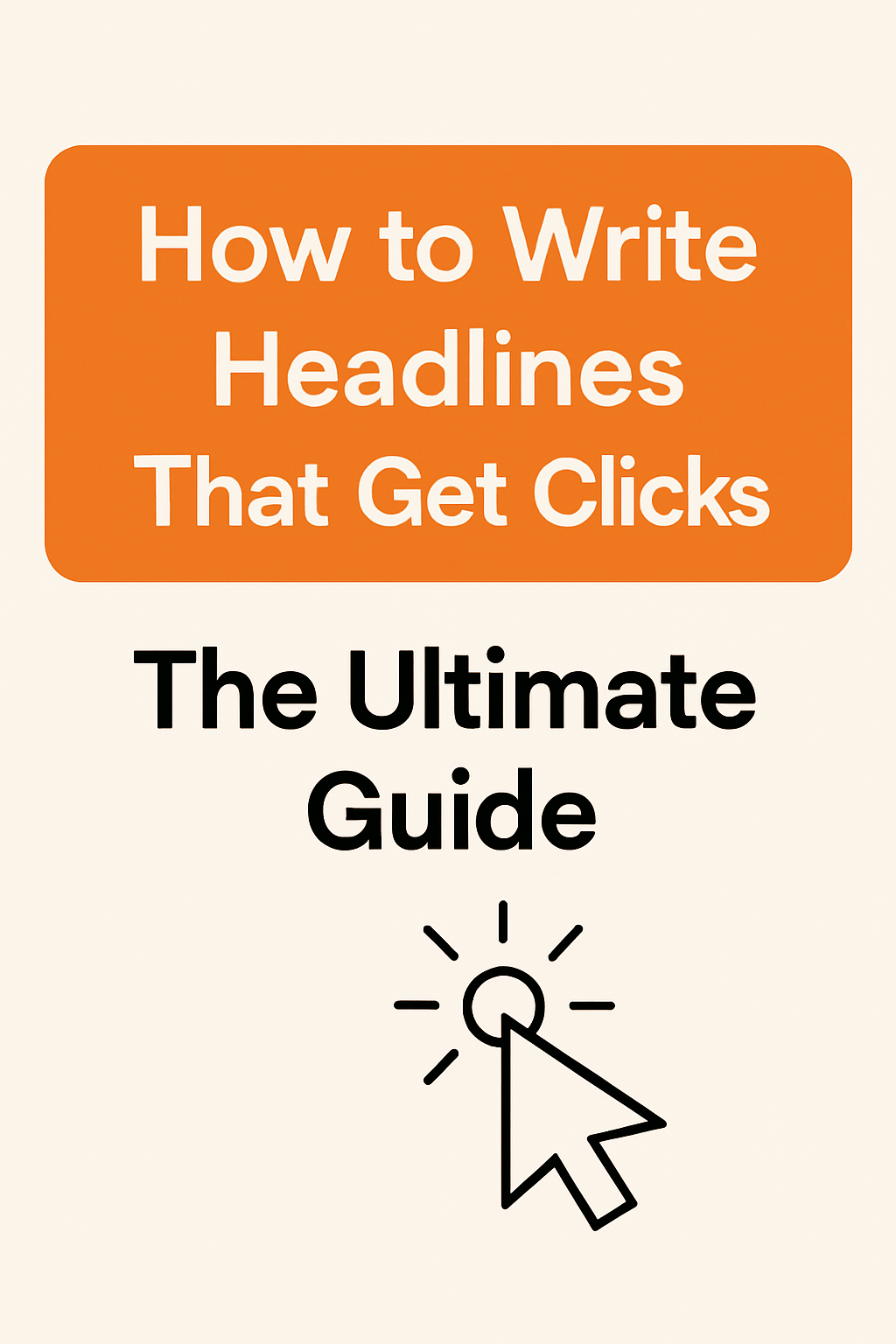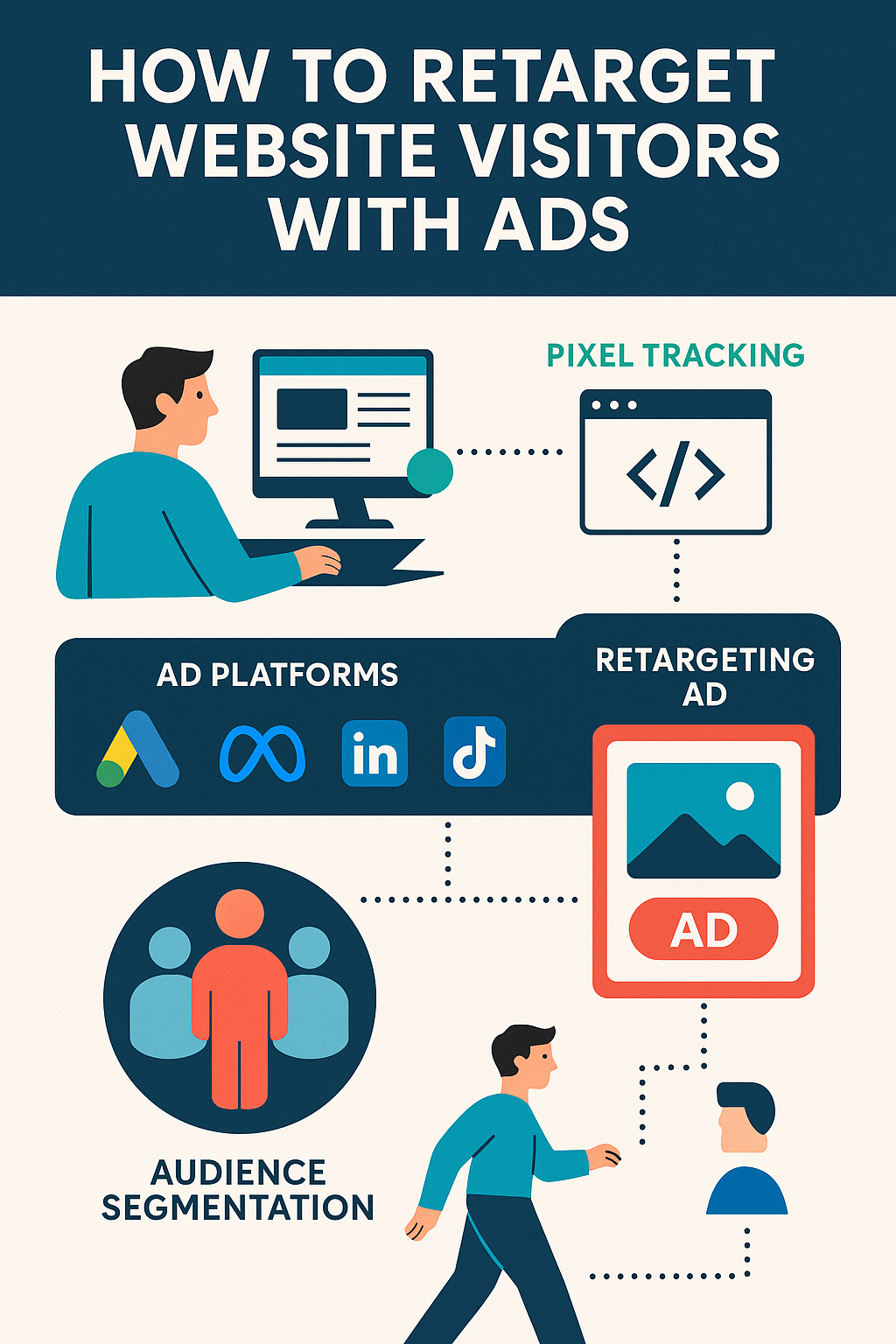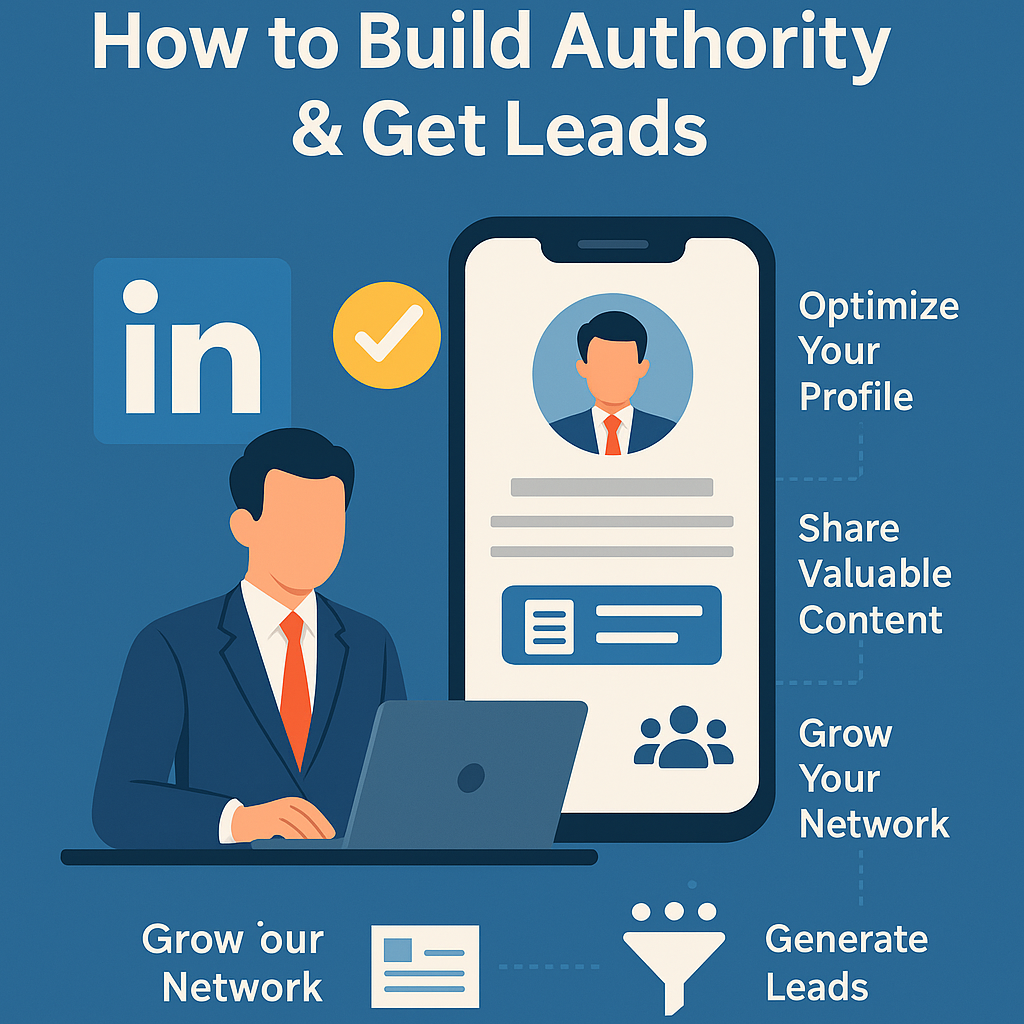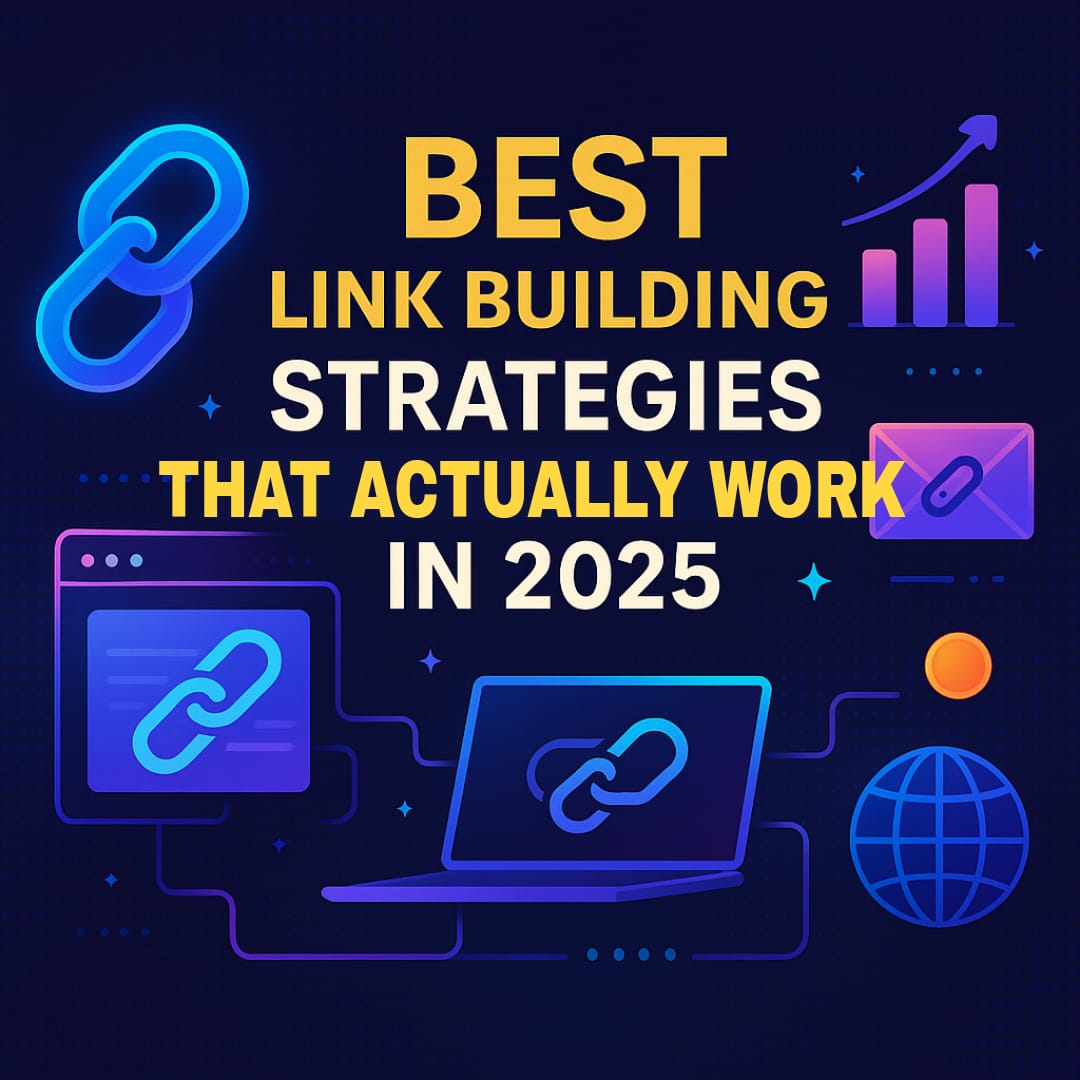How to Write Headlines That Get Clicks
Table of Contents
In an ever-changing digital world, headlines represent the first and even the only chance to attract attention. When writing a blog post, running a Facebook ad, mailing an email campaign, or posting on LinkedIn, your headline determines whether your audience engages and reads, or scrolls past. Think of your headline as the gateway to your content. If the gate isn’t appealing, then nobody is going to walk through. According to ranked, Headlines influence the reader’s mindset and help you convey your relevance.
Writing clickable headlines is both an art and science that requires creativity, psychology, and marketing flame. In this guide, we’ll unravel the proven strategies to write irresistible headlines that will create clicks and retain your audiences’ engagement without falling into the clickbait traps that hurt your brand and SEO.
Why Headlines Matter More Than You Think
David Ogilvy, known as the “Father of Advertising,” remarked that, “On the average, five times as many people read the headline as read the body copy.” This remains true in 2025, but with even more at stake.
Your headline affects much more than just CTR. Your headline matters for SEO, dwell time, social shares, and brand trust. Here’s why:
- SEO aspects – Because search engines, especially Google, are robots, they rely on your title tag (headline) to identify what relevance your page has. A well-crafted headline with keywords essentially tells Google what your content is about.
- CTR driver – Your headline is the factor that will drive more or less clicks to your content. Whether it’s as a Google SERP result, a YouTube video, or a newsletter subject line, a headline matters for clicks.
- First impressions matter – Your headline plays a role in setting expectations about your content. If it’s captivating and interesting, people will stay on your virtual page and engage. If it is misleading, people will bounce—and Google will notice.
- Emotional hook – Humans have an emotional response to curiosity, urgency, and value. A catchy headline can both build emotion in humans in a matter of seconds.
All in all, headlines can make or break your content marketing campaign.
The Psychology Behind Click-Worthy Headlines
To write attention-grabbing headlines, you first have to understand why people click in the first place. This dives deeper into human psychology than you would think, rather than just marketing strategy.
- Curiosity Gap: People want closure. A headline that teases information creates a psychological itch that the brain wants to scratch. An example: “You Won’t Believe What This Small Business Did to Triple Its Revenue in 30 Days.”
- Fear of Missing Out: Urgency and exclusivity inspire people to act. An example: “Last Chance: 7 Email Marketing Mistakes That Could Be Killing Your ROI.”
- Desire for Value: Headlines that promise solutions, hacks, or insights signal value immediately. An example: “10 Proven Instagram Growth Hacks for 2025.”
- Emotional Triggers: Words like “secret,” “powerful,” “surprising,” and “ultimate” stir up excitement.
If you combine these triggers with clarity and authority, you will have a headline that is compelling and authentic.
Proven Formulas for High-Click Headlines
You don’t have to always go out and reinvent the wheel. High-performing headlines often follow some tried and true formulas. Here are some to simply steal and adapt:
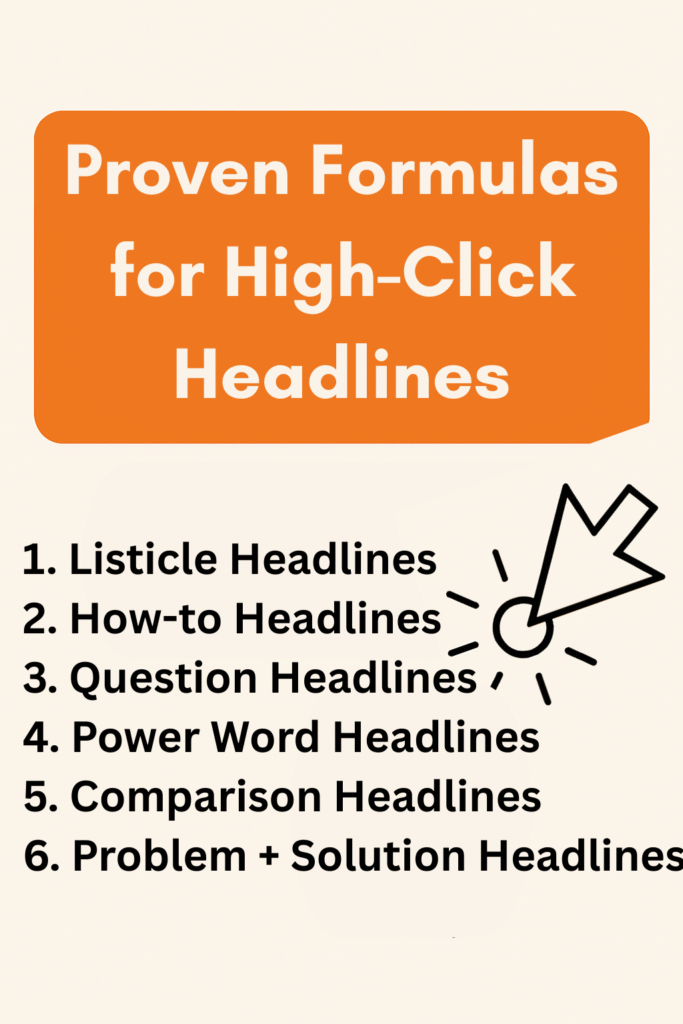
1. Listicle Headlines.
Numbers help provide structure and a sense of closure. There is comfort in knowing exactly what to expect.
- Example: “15 SEO Tools Every Marketer Should Test Drive in 2025.”
2. How-to Headlines.
Timeless and work for a reason. People want to know how something can solve their problem.
- Example: “How to Write Blog Posts That Rank on Google (Step-by-Step).”
3. Question Headlines.
Ask your audience a question they are likely already asking themselves.
- Example: “Is AI Replacing Content Writers in 2025?”
4. Power Word Headlines.
Strong, emotional language creates urgency.
- Example: “The Ultimate Guide to Landing Clients That Pay a Lot of Money.”
5. Comparison Headlines.
Decode content that helps a person make a choice.
- Example: “Canva vs Photoshop: Which Should You Use in 2025?”
6. Problem + Solution Headlines.
Directly address things that hurt.
- Example: “Low Web Site Traffic? Here is what REALLY works.
These headline formulas also work for blogs, YouTube titles, emails subject lines, and even social posts.
Crafting SEO-Optimized Headlines Without Losing Click Appeal
The tricky part? Writing a headline that can rank in Google and attract clicks from humans. That is where many marketers come in. Let’s explore how to creatively balance the two objectives, search engine optimization (SEO) and clickable headlines.
- Place Your Keywords – Place your most important keyword as close to the beginning of the headline as possible: “Content Marketing Strategies: How to 10x Traffic in 2025.”
- Stick to 60 Characters or Less – Longer titles are truncated in search engines and will hurt your CTR (click-through rate). The shorter, the better
- Use Power Words, while being Natural – Do not keyword stuff your headlines. Use your keywords naturally, and integrate some emotional hooks.
- Conduct Title A/B Tests – Use a tool like Google Search Console or run a split test on social media, to determine which headline format drives more clicks.
- Write for Humans, 1st – Google rewards user experience, so keep that in mind. A keyword stuffed headline might rank for a while, but if no one clicks on it, or stays you will drop down in ranks quickly.
Advanced Tips to Supercharge Your Headlines
For marketers and copywriters who wish to go deeper, here are advanced strategies most successful copywriters and marketers use:
1. Use “Parentheses” or “Brackets”
Incremental words followed by parentheses can increase CTR by 38% (HubSpot).
- For example: “How to Build a Personal Brand [Even If You Are a Beginner].”
2. Add Data & Specificity
Data adds credibility to the article.
- For example: “7 Copywriting Formulas Backed by Psychologh Studies.”
3. Build Urgency
People that see deadlines or that there is time sensitivity will act now.
- For example: “Read Before Running Facebook Ads in 2025.”
4. Make It Personal for Your Audience
Create a distinct segment for your audience.
- For example: “The Ultimate Guide to Freelancing for Graphic Designers.”
5. Use a Trending Keyword
Add a keyword that is trending in conversations to increase traffic.
- For example: “AI Marketing Hacks You Can’t Ignore in 2025.”
Clickbait vs. Click-Worthy: Walking the Fine Line
The difficult reality is that while misleading headlines will result in a surge of clicks in the moment, you will ultimately lose credibility. Google will also lower the ranking of pages that have a high bounce rate because they fail to deliver.
Clickbait: “This Trick Will Make You a Millionaire Overnight!”
Click-Worthy: “5 Smart Investing Habits That Can Build Wealth Over Time.”
What’s the distinction? Authenticity. When creating a headline, you want it to align with the value of your content. You want something that is compelling but still honest.
Testing and Improving Your Headlines
Regardless of how great you believe a headline might be, data wins over belief. Here’s a way to keep tune-up:
- Use of an A/B Testing Tools like Optimizely or Thrive Optimize for your landing pages.
- Track your click-through rate in Google Search Console to see which headline is underperforming.
- Use a Headline Analyzer as CoSchedule or Sharethrough to get feedback on emotional tone and readability.
- Use Social Media to post the same content with different headlines and see what gets the most engagement.
With testing and data, you create an feedback-loop, and you will refine your headlines over time.
Conclusion: Headlines Are the Front Door to Your Content
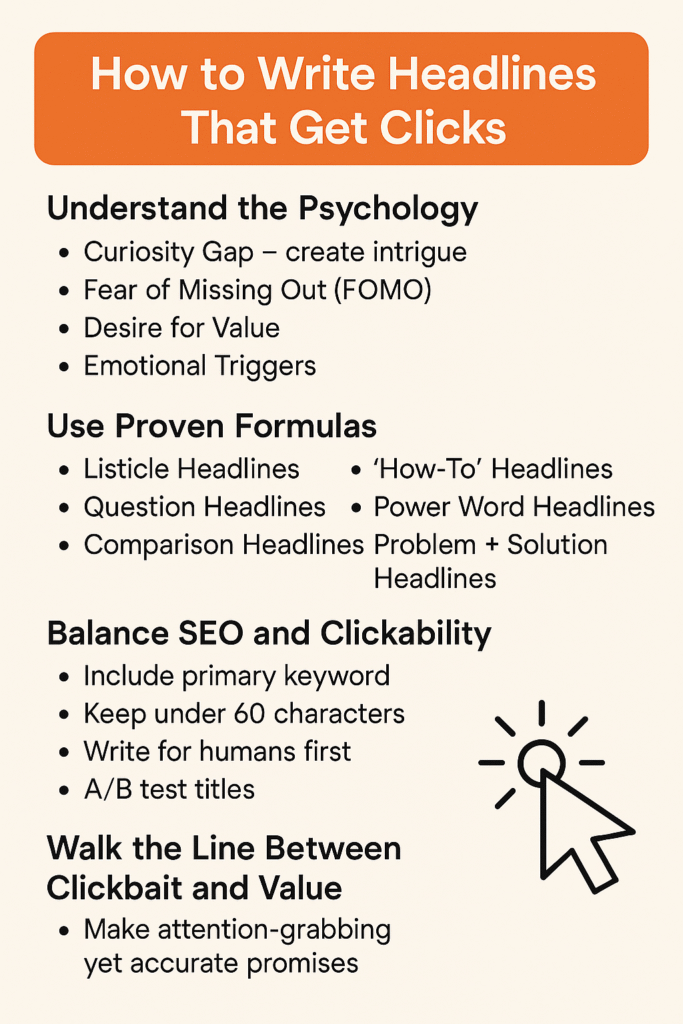
Crafting click-worthy headlines requires a combination of strategy and creativity. You need the psychology of curiosity, the structure of tested formulas, the precision of SEO, and the diligence of testing. If you do it right, your audience will increase traffic, engagement and conversions across every platform.
The next time you publish content don’t think of the headline as an afterthought. Spend just as much time on it as you do on the body copy. A great article with a weak headline is like a fine dining establishment with a broken sign outside; no one goes in.
For more such articles click here.
Frequently Asked Questions (FAQs)
Why do headlines really matter in digital marketing?
Headlines are the first thing a reader will see, and they will determine whether or not someone clicks on your content or skips it altogether. A strong headline can increase clicks (or click-through rate) and boost SEO while establishing the tone for your article.
How long should a good headline be?
You want headlines to ideally be 60 characters or fewer, so they won’t get cut off in search. However, the sweet spot is usually somewhere between 6–10 words that balance clarity and engagement.
What are “power words” in headlines?
Power words are words that carry an emotional load like ultimate, proven, secret, powerful, shocking, and unbelievable. They appeal to a reader’s curiosity or create urgency to increase the likelihood of that action.
Are listicle headlines still good headlines in 2025?
Yes! Listicles are good headlines because they offer strong structure and promise takeaways. For example, “10 Tips to Improve Your Email Marketing” gives a sense of actionability, newness and ease of consumption.
Should I value SEO or clickability more when writing headlines?
Both matter. Your headline needs to contain relevant keywords to rank well in SEO, but at the same time, it needs to attract a human reader, as well. The best approach is to balance keyword optimization with emotional word choice.
How is clickbait distinct from an effective headline?
Clickbait attracts readers through misleading or exaggerating posts that deliver less than promised. An effective headline will generate curiosity, but delivers on the value in the post.
How can I experiment with which headline works better?
You can A/B test for your headlines on sites and with tools like Google Optimize, Optimizely, or even on social media posts. Checking pull through rates (CTR) tracking engagement rates to see what headlines resonate with the target audience will assist you.
Can I use the same headline building technique over and over?
Yes! You can and should use the same effective headline examples (“How to…”, “Top Ten…”, or “The Everything Guide”) over and over again for different subject matter.
Do numbers in headlines impact CTR and clicks?
Yes. Studies show that using numbers makes a headline perform better. Numbers in headlines shape the expectations of structural and specific value in the headline. Also, studies show that odd numbers (7, 11, 13) perform better than even numbers.
What resources can help me write better headlines?
A few resources: CoSchedule Headline Analyzer, Sharethrough, and of course, you can always use ChatGPT for brainstorming. They give you feedback on readability scores, ability to trigger emotions, and a balanced approach to SEO.
